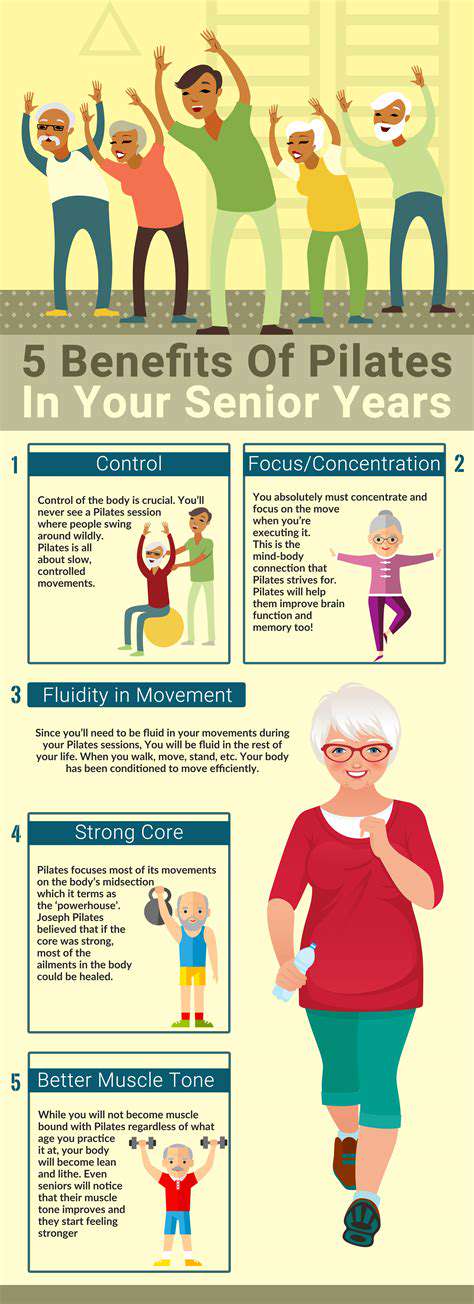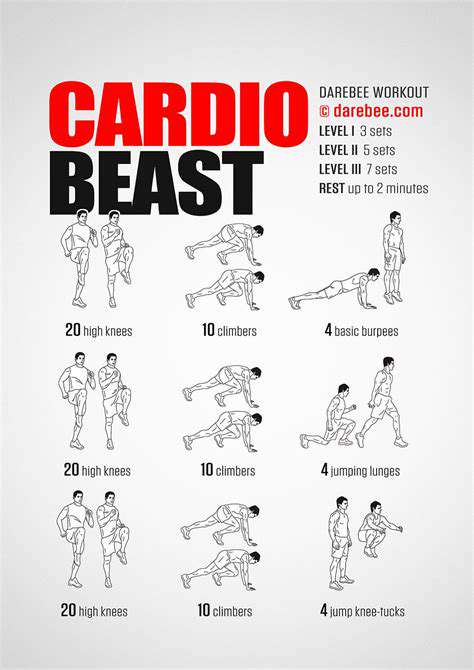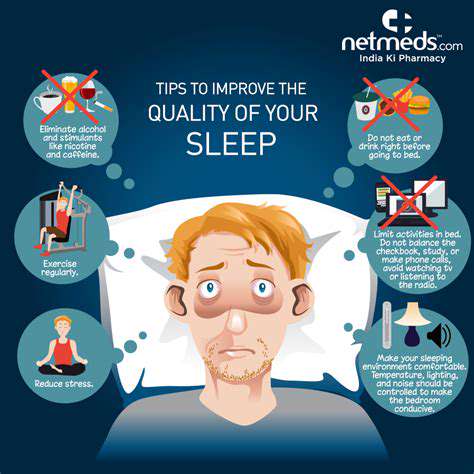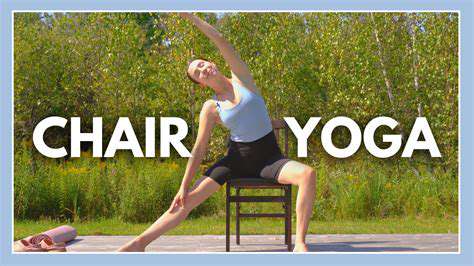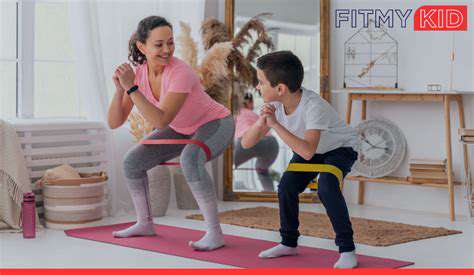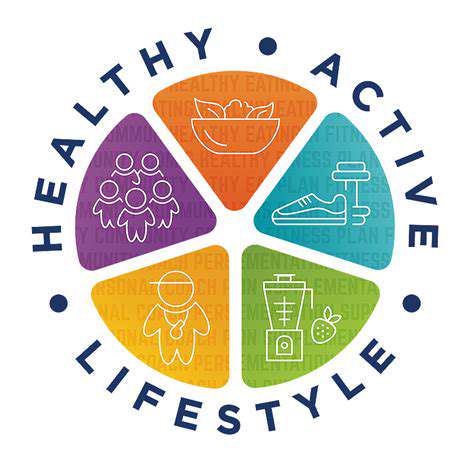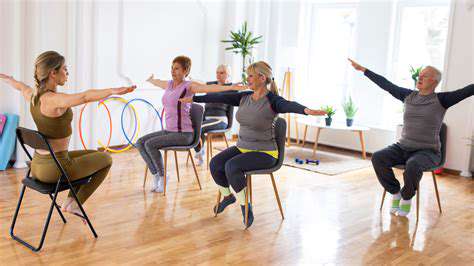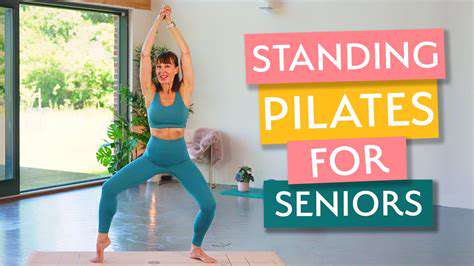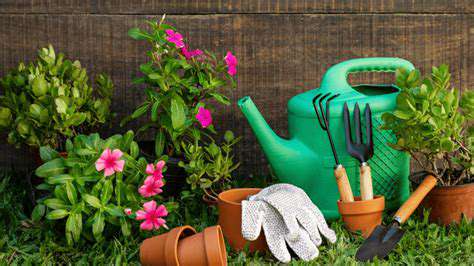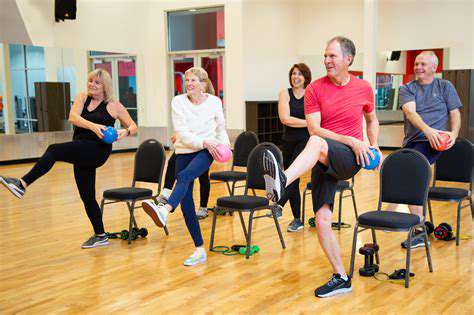Incorporating Exercise into Household Chores: Senior Tips
Folding laundry might seem like a sedentary task, but it can be a surprising workout for your arms, legs, and core. Instead of just standing still, try incorporating small, controlled movements. For example, as you fold each item, gently shift your weight from one foot to the other, and engage your core muscles to maintain balance. This subtle movement adds a small amount of resistance and helps you stay engaged without adding too much stress on your joints.
Try to avoid hunching over. Keeping your back straight and your shoulders relaxed will not only help with posture but also make the task less physically demanding in the long run. This small change in technique makes a noticeable difference in the overall exertion.
Sweeping Up the Fun
Sweeping floors is a great opportunity for a low-impact workout. Instead of just pushing the broom back and forth, try adding in some light arm circles or small steps as you move around the room. This can help increase your heart rate, strengthen your upper body, and improve your balance. The rhythmic motion can be meditative and contribute to a light cardio session.
Vary your sweeping technique. For example, try incorporating short bursts of faster sweeping to keep your heart rate elevated. This will engage different muscle groups and make the task more dynamic. The added exertion will make the task feel less repetitive.
Mopping Up with Movement
Mopping the floors can be surprisingly effective for a light full-body workout. As you mop, try incorporating small squats or lunges, engaging your leg muscles and improving your cardiovascular health. This subtle shift in technique will help you stay active and engaged while cleaning your home.
Don't forget to keep your posture upright. This will help prevent back strain and maintain a healthy posture throughout the cleaning process. Maintaining good posture will prevent any unnecessary strain on your muscles and allow for a more efficient and enjoyable cleaning experience.
Gardening with Grace
Gardening is a fantastic way to incorporate exercise into your daily routine. Digging, weeding, and planting all involve various movements that work different muscle groups. Try to maintain a steady pace, and focus on your posture and form to avoid unnecessary strain on your body. You'll be surprised how much of a workout you can get from tending to your garden.
Make it a full-body workout. As you plant or prune, incorporate arm movements, and adjust your posture. Taking short breaks and stretching throughout the process will keep your body engaged and prevent stiffness.
Cleaning Windows: A Gentle Stretch
Cleaning windows is a surprisingly good way to get a gentle workout. Reaching up to clean the windows involves stretching, strengthening your arms, and improving your posture. Keep your body in a stable position and focus on your breathing. This will improve your core stability and enhance the entire process.
Consider using a step stool for high windows. This will help you avoid overexertion and strain your body. This will help ensure that you're performing the task correctly and safely.
Tidy Up with Targeted Exercises
Decluttering and organizing can also be incorporated into a light workout. Carrying items from one place to another, or moving furniture slightly will engage your core and leg muscles. Consider adding light cardio intervals as you move items around the house, such as short bursts of walking or jumping jacks. This will help increase your heart rate and make the process more engaging.
Focus on maintaining good posture and taking breaks as needed. This will help prevent fatigue and promote a healthy exercise routine. Be mindful of your body and listen to its signals.
Transforming Cleaning into Cardio
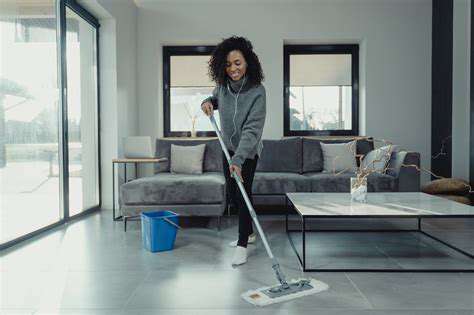
Embracing the Physical Benefits
Cleaning your home, while often perceived as a chore, can be a surprisingly effective way to incorporate physical activity into your daily routine. Sweeping, mopping, vacuuming, and dusting all require exertion, engaging various muscle groups and contributing to a moderate level of cardiovascular fitness. Consider how much energy you expend when tackling those stubborn stains or tackling a large area. This physical activity can lead to improved circulation and increased energy levels.
The act of moving around, lifting, and reaching while cleaning can strengthen muscles in your arms, legs, and core. This is particularly helpful if you lead a sedentary lifestyle or want to increase your overall physical activity levels without dedicating time to a formal workout.
Maximizing Efficiency and Movement
Cleaning doesn't have to be a slow, methodical process. By strategically planning your cleaning tasks and incorporating efficient movements, you can significantly increase the physical exertion involved. For example, consider tackling one room at a time, moving from one task to the next with purpose and momentum. This approach can help you avoid unnecessary back-and-forth movements and maintain a higher level of activity throughout the cleaning process.
Incorporating dynamic stretches before and after cleaning can also help improve flexibility and reduce the risk of injury. Think about doing arm circles, leg swings, or torso twists before you begin. This will help prepare your body for the physical demands of cleaning.
Creating a Personalized Cleaning Routine
To truly transform cleaning into cardio, tailor your cleaning routine to your specific needs and preferences. Consider incorporating more strenuous tasks like scrubbing or heavy lifting into your routine, especially if you are aiming for a higher intensity workout. Varying your routine can help to keep your body challenged and engaged.
If you have limited time, focus on high-impact cleaning tasks like vacuuming, mopping, or scrubbing, which naturally involve more movement. Make sure to incorporate rest periods as needed, so you don't overexert yourself.
Incorporating Music and Motivation
Turning up the music and setting a fun, upbeat playlist can significantly improve your motivation and make the cleaning process more enjoyable. The rhythm and energy of the music can help you maintain a consistent pace and keep you moving. Find a playlist that energizes you and makes you want to dance around the house while cleaning.
Using music as a motivator can be especially helpful for tasks that might seem tedious. Music can turn a chore into a fun and energizing activity.
Integrating Cleaning with Other Activities
Combine cleaning with other activities to make the most of your time and maximize the physical benefits. For instance, while you're cleaning, you can listen to an audiobook, podcast, or educational program. This can help make the process more engaging and productive.
Cleaning the house while listening to a favourite podcast or audiobook can transform the cleaning task from a tedious chore into an enjoyable and productive activity. This approach can help you stay motivated and make the most of your time.
Tracking Progress and Setting Goals
To monitor your progress and stay motivated, consider tracking your cleaning sessions and setting realistic goals. Tracking how long you clean, the areas you cover, and the intensity of your cleaning can help you identify areas for improvement and celebrate your achievements.
Setting specific cleaning goals, such as cleaning a particular room or completing a specific task, can help you stay focused and motivated. This approach can help you make cleaning a regular part of your fitness routine.
Gardening: A Natural Workout

Gardening: More Than Just Growing Flowers
Gardening is a surprisingly effective way to get a natural workout. Moving around the garden, digging, planting, weeding, and harvesting all contribute to physical activity. You're engaging different muscle groups, improving cardiovascular health, and burning calories without even realizing it. This low-impact exercise is perfect for people of all fitness levels. From beginners tending to a small herb patch to seasoned gardeners cultivating a sprawling vegetable garden, the activity level can be tailored to individual needs and preferences.
Beyond the physical benefits, gardening offers a sense of accomplishment and connection to nature. The satisfaction of nurturing a seed into a thriving plant, or the joy of harvesting fresh produce from your own garden, is deeply rewarding. This sense of accomplishment can boost your mood and overall well-being, making gardening a holistic activity that benefits both your body and mind. It's a wonderful way to connect with the natural world and appreciate the beauty of the outdoors.
The Physical Benefits of Gardening
Gardening offers a wide array of physical benefits. From strengthening your core muscles while bending and lifting during planting and harvesting to improving your cardiovascular health through the continuous movement involved in tasks such as tilling the soil and weeding, the activities are surprisingly diverse.
The repetitive motions involved in gardening, such as digging and planting, can strengthen your hands, arms, and legs. The controlled movements and exertion in gardening can also improve balance and coordination. Furthermore, the fresh air and sunlight exposure you get while working in your garden can improve your mood and overall well-being. Gardening is a low-impact workout that can improve your physical and mental health simultaneously.
The Mental and Emotional Benefits of Gardening
Gardening provides a unique opportunity for stress reduction and mental clarity. The act of nurturing plants, tending to the soil, and observing the growth process can be incredibly calming and meditative. It provides a moment of respite from the daily grind, allowing you to focus on the present moment and appreciate the beauty of nature.
Gardening can also foster a sense of accomplishment and satisfaction. Watching your plants grow and flourish, or harvesting fresh produce from your own garden, is a deeply rewarding experience. This sense of accomplishment can boost self-esteem and improve your overall mood. Gardening is a fantastic way to connect with nature and appreciate the simple beauty of the natural world. It provides a tranquil escape from the hustle and bustle of daily life.
Adapting for Comfort and Safety
Ergonomic Adjustments for Ease
When incorporating exercise into household chores, consider ergonomic adjustments to minimize strain on your body. For example, when dusting high shelves, use a lightweight, extendable duster instead of reaching awkwardly. This simple change can prevent shoulder and back pain, allowing you to maintain good posture and continue the task with more comfort and safety. By strategically choosing tools and equipment, you can reduce the physical demands on your body and make the entire process more enjoyable and sustainable.
Using a step stool or a sturdy chair for tasks like changing light bulbs or reaching high cabinets can significantly reduce the risk of falls and injuries. These small adjustments can make a big difference in your comfort and overall safety while performing these necessary household chores.
Prioritizing Posture and Movement
Maintaining good posture throughout your chore-based exercise routine is crucial. Keep your back straight, engage your core muscles, and avoid hunching or twisting excessively. This not only prevents back pain but also engages more muscle groups, increasing the overall benefit of the exercise.
Incorporate slow, controlled movements. Avoid rushing through tasks. This allows your body to adapt and adjust to the activity, minimizing the risk of strain and injury. A mindful approach to each step is more effective than a quick, jerky motion.
Incorporating Breaks and Rest Periods
Even with a focus on ergonomic adjustments and mindful movement, it's important to schedule regular breaks during your chore-based exercise routine. These breaks help prevent fatigue, reduce the risk of injury, and allow your body to recover between activities. Short rest periods throughout the day, even just a few minutes, can help maintain energy levels and overall well-being.
Listen to your body. If you feel any pain or discomfort, stop immediately and rest. Pushing through pain can lead to more serious injuries. Prioritizing your body's signals is essential for maintaining safety and preventing long-term issues.
Choosing Appropriate Activities
Not all household chores are created equal when it comes to incorporating exercise. Some tasks, like vacuuming or mopping, involve sustained movements that engage more muscle groups, providing a better workout than others. Focus on selecting tasks that challenge you physically while remaining manageable and safe.
Consider your current physical capabilities and limitations. Start with activities that you can comfortably perform and gradually increase the intensity or duration as your fitness improves. This progressive approach to incorporating exercise into your chores helps you avoid overexertion and maximizes the benefits of each activity.
Safety Equipment and Considerations
Using appropriate safety equipment can significantly enhance the comfort and safety of your chore-based exercise routine. This can include items such as non-slip mats, gloves, or sturdy footwear, especially for tasks involving cleaning or moving objects. Proper safety gear can prevent slips, falls, and injuries.
Be mindful of the environment. Ensure that your workspace is well-lit and free of clutter. A clear and organized area minimizes the risk of tripping or stumbling, promoting a safer exercise environment.
Mindfulness and Motivation
Incorporating a mindful approach to your chore-based exercise routine can make the experience more enjoyable and sustainable. Focusing on the physical sensations of movement, listening to your body's signals, and appreciating the accomplishment of each task can help maintain motivation. This approach allows you to view chores as opportunities for physical activity rather than just necessary tasks.
Finding ways to make the process more engaging can significantly enhance your motivation. For example, listening to music, podcasts, or audiobooks while performing chores can help make the experience more pleasant and less monotonous. This can lead to increased adherence to the exercise routine and better overall outcomes.
